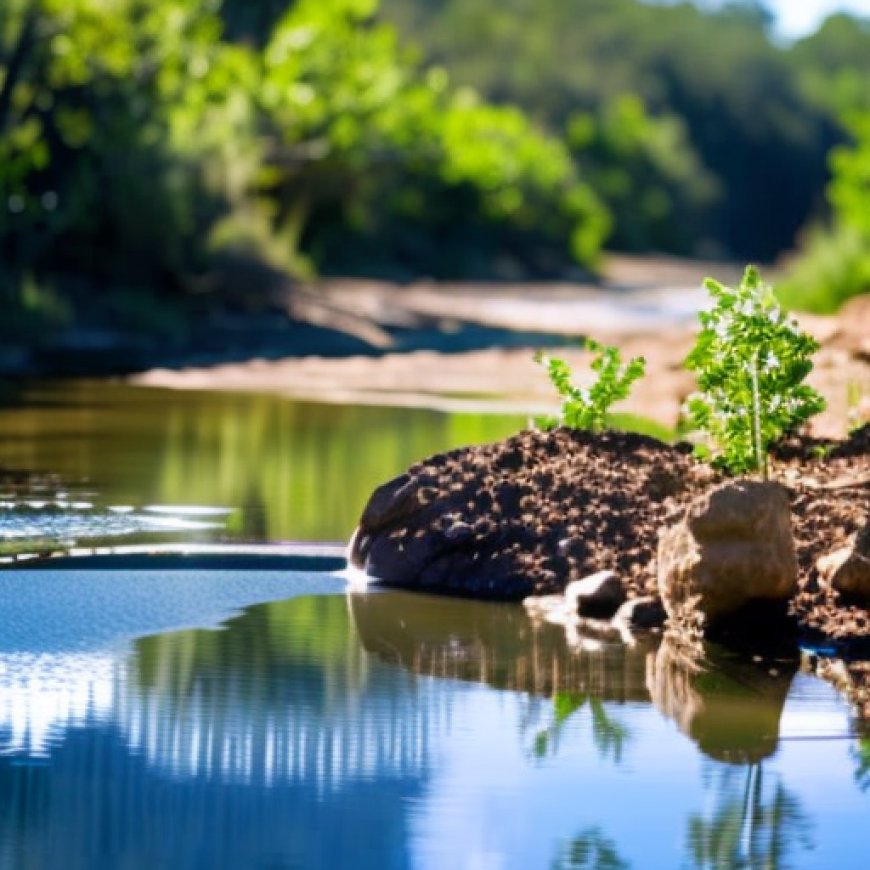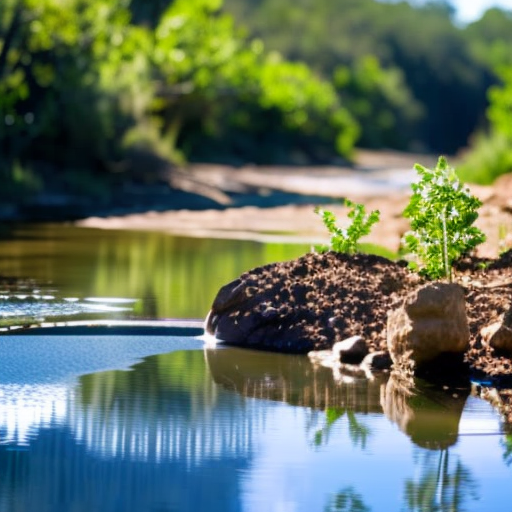Our Water Matters: Restoring riparian areas to improve aquifer health – The Big Bend Sentinel
Our Water Matters: Restoring riparian areas to improve aquifer health – The Big Bend Sentinel The Big Bend Sentinel


Riparian Environment Degradation in the Big Bend Region
The European settlement of the Big Bend region has had a significant impact on the area’s watersheds, leading to the degradation of the riparian environment. This degradation is characterized by a decrease in structural complexity, resulting in what is known as “structural starvation” of riparian areas. These areas refer to the lands along the edges of creeks and rivers.
Factors Contributing to Structural Starvation
One major factor contributing to structural starvation is logging, which has caused the degradation of riparian forests. For example, the Study Butte Mining Company harvested approximately 2,522 cords of firewood from local sources over a three-year period. This massive amount of logging has severely depleted riparian forests in the region. Similarly, Fort Davis, with its over 100 structures, also heavily used regional wood resources, resulting in the depletion of riparian forests along the Cienega and Limpia Creeks in Jeff Davis County from 1867 to 1891.
Overgrazing is another significant contributor to the structural starvation of riparian areas. The Chihuahuan grasslands have supported large herds of cattle, sheep, and goats since the 1500s. Livestock are typically limited by food, water, and cover. In the absence of guidance, they tend to establish a home range with easy access to these resources in riparian areas. This has led to fragmented riparian forests with reduced populations of cottonwoods and willows. The lack of young or midstory trees is a clear indication of this degradation. As a result, sediment is exported from these riparian systems at an accelerated rate, causing down-cutting of the stream bed and reducing water flows to the watershed.
Addressing the Broken Hydrology with Filter Dams
One way to address the broken hydrology and restore riparian forests is through the use of filter dams, also known as brush weirs. These simple structures consist of untreated posts pounded into pre-drilled holes in the stream bed. Local brush is then woven and stuffed between the posts to a height of 18 inches. Filter dams slow down the water, reducing its scouring action and trapping sediment. The trapped sediment raises the floor of the channel over time and carries seeds and nutrients that allow woody riparian species to take root. Additionally, the increased time that water spends on the surface benefits the riparian aquifer below, increasing base flows. Restored riparian aquifers can be tapped by riparian vegetation, which will eventually contribute to the natural complexity of the system. Brush weirs are just one of several tools that can be used to remediate decades of damage and restore the health of riparian forests.
Importance of Riparian Forest Restoration
An intact riparian forest provides numerous benefits, including bank stability, sediment and nutrient retention, and increased structural complexity. It also enhances the natural storage of water in riparian aquifers. By restoring riparian forests, we can unleash these benefits and improve the overall health of the ecosystem.
Securing Funding for Stream Restoration Projects
The Rio Grande Joint Venture has recently received a $3.5 million grant from the America the Beautiful Challenge administered by the National Fish & Wildlife Foundation. Some of these funds will be used to coordinate and incentivize stream restoration projects in the Big Bend region. Landowners interested in participating in these projects can contact Price Rumbelow at 432.294.1168 or prumbelow@abcbirds.org for more information.
Trey Gerfers is a San Antonio native and serves as the general manager of the Presidio County Underground Water Conservation District. He has been living in Marfa since 2013.

SDGs, Targets, and Indicators Analysis
1. Which SDGs are addressed or connected to the issues highlighted in the article?
- SDG 6: Clean Water and Sanitation
- SDG 15: Life on Land
The article discusses the degradation of riparian environments and the impact on water systems. This connects to SDG 6, which focuses on ensuring clean water and sanitation for all. Additionally, the article mentions the depletion of riparian forests and the loss of biodiversity, which aligns with SDG 15, which aims to protect, restore, and promote sustainable use of terrestrial ecosystems.
2. What specific targets under those SDGs can be identified based on the article’s content?
- SDG 6.6: By 2020, protect and restore water-related ecosystems, including mountains, forests, wetlands, rivers, aquifers, and lakes.
- SDG 15.1: By 2020, ensure the conservation, restoration, and sustainable use of terrestrial and inland freshwater ecosystems and their services.
The article highlights the need for restoration and protection of riparian environments to address the degradation caused by human activities. This aligns with SDG 6.6, which focuses on protecting and restoring water-related ecosystems. Additionally, the article emphasizes the importance of conserving and restoring terrestrial ecosystems, specifically riparian forests, which relates to SDG 15.1.
3. Are there any indicators mentioned or implied in the article that can be used to measure progress towards the identified targets?
- Presence of filter dams or brush weirs in riparian areas
- Increased structural complexity of riparian forests
- Improved bank stability, sediment and nutrient retention
- Increase in natural storage of water in riparian aquifers
The article mentions the use of filter dams or brush weirs as a method to address the degradation of riparian environments. The presence of these structures can serve as an indicator of progress towards the restoration and protection of water-related ecosystems. Additionally, the article discusses the importance of increased structural complexity in riparian forests, improved bank stability, sediment and nutrient retention, and increased natural storage of water in riparian aquifers. These factors can be used as indicators to measure progress towards the conservation, restoration, and sustainable use of terrestrial and inland freshwater ecosystems.
SDGs, Targets, and Indicators Table
| SDGs | Targets | Indicators |
|---|---|---|
| SDG 6: Clean Water and Sanitation | 6.6: By 2020, protect and restore water-related ecosystems, including mountains, forests, wetlands, rivers, aquifers, and lakes. | – Presence of filter dams or brush weirs in riparian areas – Increased structural complexity of riparian forests – Improved bank stability, sediment and nutrient retention – Increase in natural storage of water in riparian aquifers |
| SDG 15: Life on Land | 15.1: By 2020, ensure the conservation, restoration, and sustainable use of terrestrial and inland freshwater ecosystems and their services. | – Presence of filter dams or brush weirs in riparian areas – Increased structural complexity of riparian forests – Improved bank stability, sediment and nutrient retention – Increase in natural storage of water in riparian aquifers |
Behold! This splendid article springs forth from the wellspring of knowledge, shaped by a wondrous proprietary AI technology that delved into a vast ocean of data, illuminating the path towards the Sustainable Development Goals. Remember that all rights are reserved by SDG Investors LLC, empowering us to champion progress together.
Source: bigbendsentinel.com

Join us, as fellow seekers of change, on a transformative journey at https://sdgtalks.ai/welcome, where you can become a member and actively contribute to shaping a brighter future.







